 |
 |
 |
| |
Effect on lipids and reverse cholesterol transport of switching to unboosted atazanavir vs. remaining on ritonavir-boosted atazanavir in regimens with a tenofovir backbone
|
| |
| |
October 6-8, 2014
16th International Workshop on Co-morbidities and Adverse Drug Reactions in HIV - Philadelphia, PA
M Harris1,2, R Saeedi3, B Ganase1, M Yousefi2, J Dubland4, GA Francis4, S Guillemi2,5,
M Hull2,5, JSG Montaner1,2,5
1. AIDS Research Program, St. Paul's Hospital
2. Department of Medicine, University of British Columbia
3. Department of Pathology and Laboratory Medicine, University of British Columbia
4. Department of Experimental Medicine, University of British Columbia
5. British Columbia Centre for Excellence in HIV/AIDS
Vancouver, BC, Canada
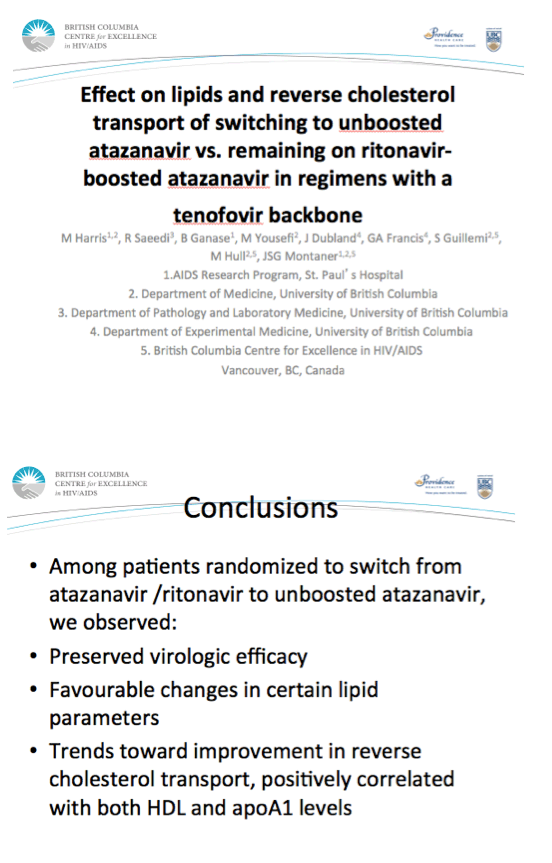
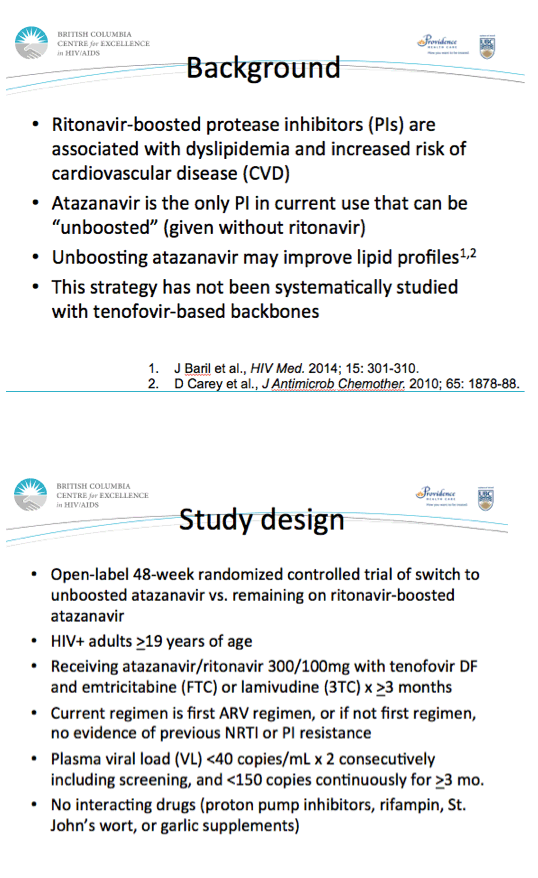
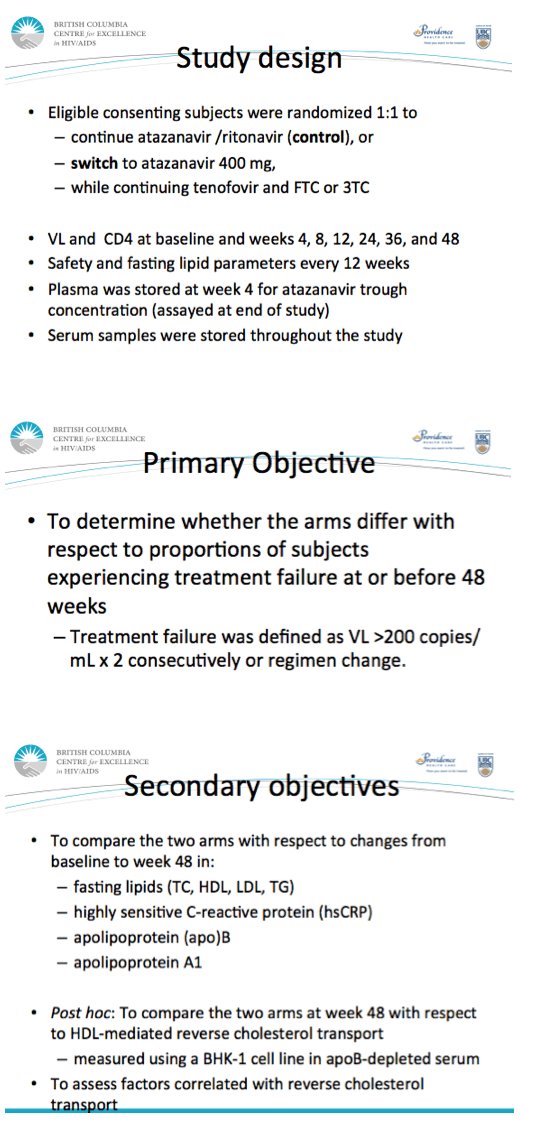
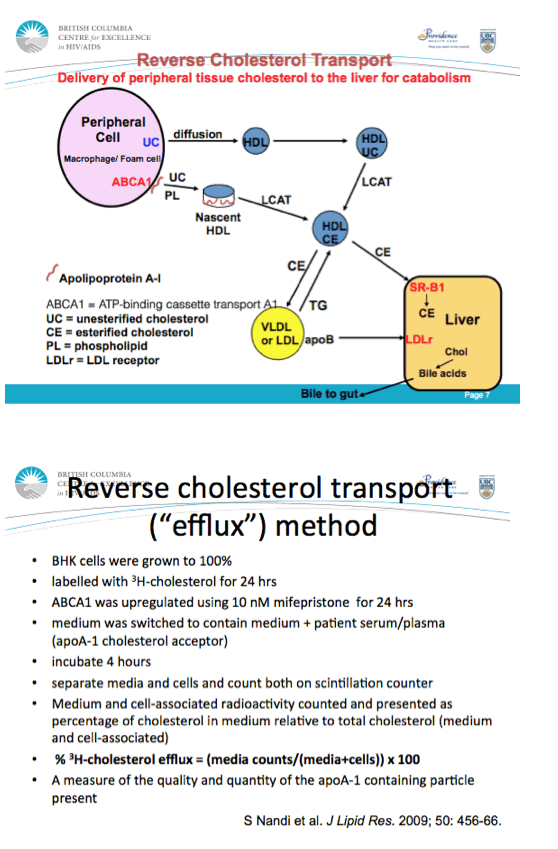
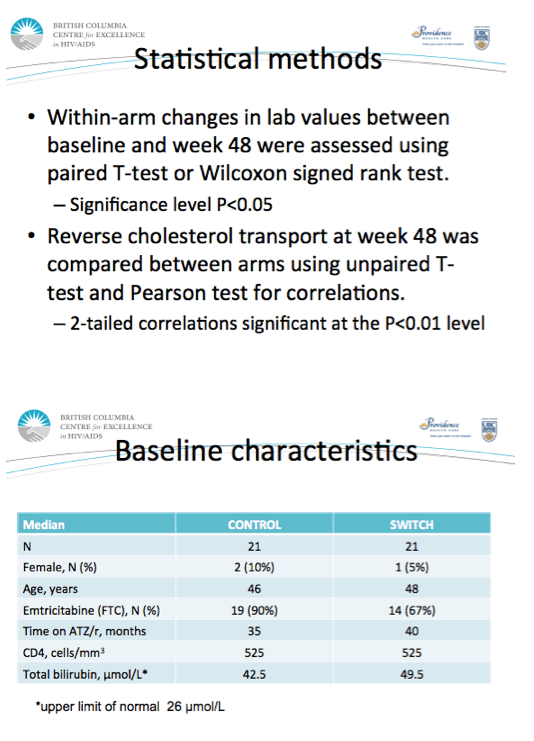
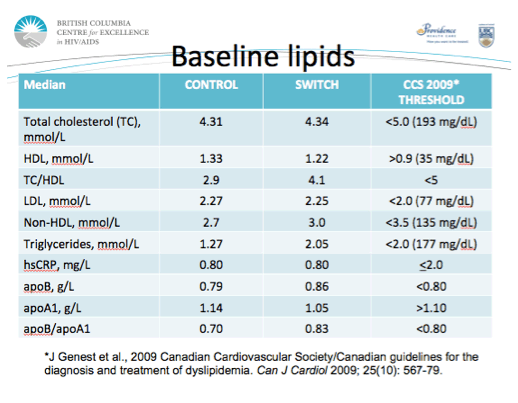
Program abstract:
Effect on lipids and reverse cholesterol transport of switching to unboosted atazanavir vs remaining on ritonavir-boosted atazanavir in regimens with a tenofovir backbone
M Harris1,2, R Saeedi3, B Ganase1, M Yousefi2, J Dubland4, GA Francis4, S Guillemi2,5, M Hull2,5, JSG Montaner1,2,5
1AIDS Research Program, St Paul's Hospital, Vancouver, BC, Canada; 2Department of Medicine, University of British Columbia, Vancouver, BC, Canada; 3Department of Pathology and Laboratory Medicine, University of British Columbia, Vancouver, BC, Canada; 4Department of Experimental Medicine, University of British Columbia, Vancouver, BC, Canada; 5British Columbia Centre for Excellence in HIV/AIDS, Vancouver, BC, Canada
Objectives: The effect of low-dose ritonavir on lipid parameters is difficult to elucidate, as most protease inhibitors are administered with ritonavir boosting; the exception is atazanavir, which can be given without ritonavir. In a randomized controlled trial of switch to unboosted atazanavir vs remaining on ritonavir-boosted atazanavir, we assessed 48-week changes in total cholesterol (TC), LDL-C, HDL-C, non-HDL-C, triglycerides (TG), apolipoprotein (apo) A-I, apoB, C-reactive protein (CRP) and reverse cholesterol transport.
Methods: This open-label 48-week trial enrolled HIV+ adults with viral load (VL)<40 copies/ml while receiving atazanavir/ritonavir 300/100 mg with tenofovir and emtricitabine or lamivudine. Eligible consenting subjects were randomized 1:1 to continue atazanavir /ritonavir (control) or switch to atazanavir 400 mg while continuing tenofovir and emtricitabine or lamivudine. VL, CD4, safety and lipid parameters were measured and serum samples were stored throughout the study. Treatment failure was defined as VL>200 copies/ml ×2 consecutively or regimen change. HDL-mediated reverse cholesterol transport was measured using a BHK-1 cell line in apoB-depleted serum collected at week 48. Within-arm changes in lab values were assessed using paired T-test or Wilcoxon signed-rank test. Reverse cholesterol transport at week 48 was compared between arms using unpaired T-test and Pearson test for correlations.
Results: 42 subjects were enrolled (39 [93%] male, median 46 years, median CD4 525 cells/mm3) and 21 randomized to each arm. Treatment failure (5%) and loss to follow-up each occurred in one subject per arm. CD4 remained stable in the switch arm (median 515 at week 48, P=0.52) and increased in the control arm (median 650 at week 48, P=0.042). No significant changes between baseline and 48 weeks were observed in either arm with respect to TC, LDL-C, non-HDL-C, apo A-I, apoB or CRP. However, the switch (but not the control) arm showed trends towards improvement in HDL-C (P=0.07) and TC/HDL (P=0.06), as well as significant changes in TG, LDL/apoB, log(TG/HDL) and total bilirubin (Table 1). Reverse cholesterol transport was similar in the two arms at week 48. In the switch arm, reverse cholesterol transport was strongly and positively correlated with serum levels of HDL-C (r=0.703, P<0.001) and apo A-I (r=0.53, P=0.004). In the control arm, reverse cholesterol transport was positively correlated with serum levels of HDL-C (r=0.507, P=0.004) but not with apo A-I.
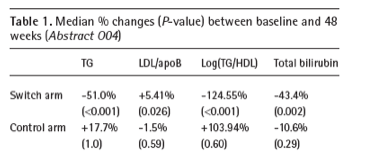
Conclusions: Favourable changes in some lipid parameters and trends toward improvement in reverse cholesterol transport were observed among patients randomized to switch from atazanavir/ritonavir to unboosted atazanavir, without an impact on virological efficacy.
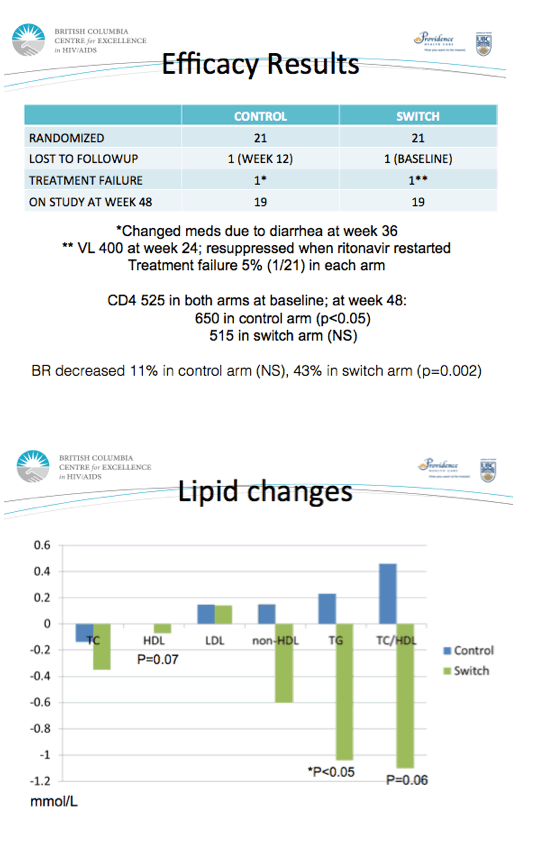
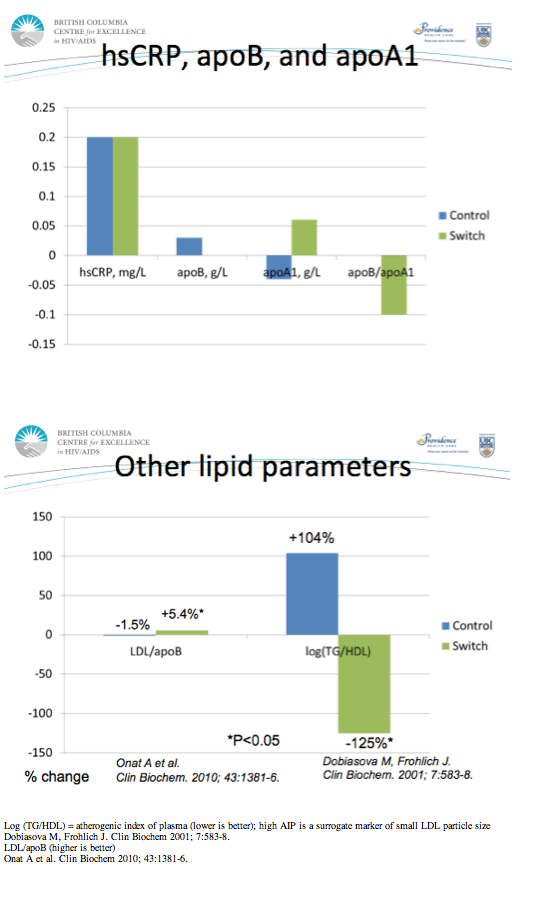
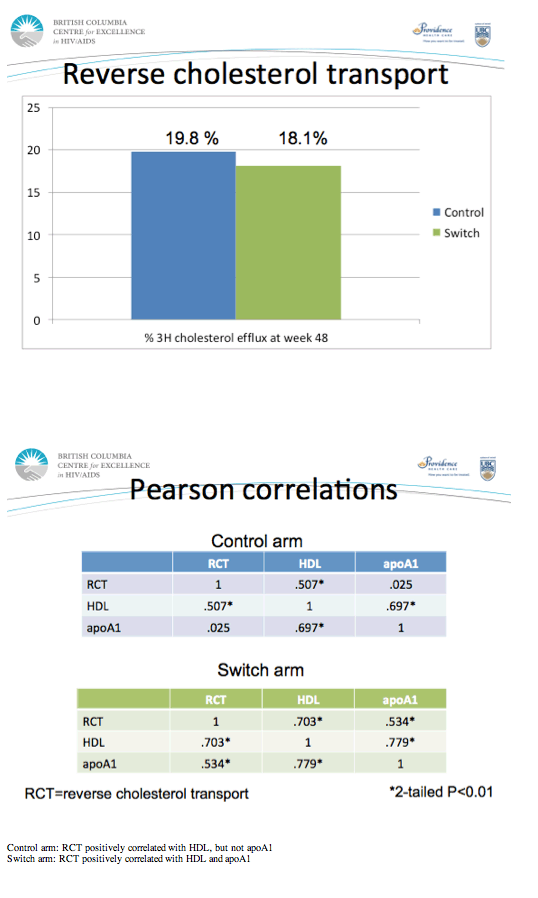
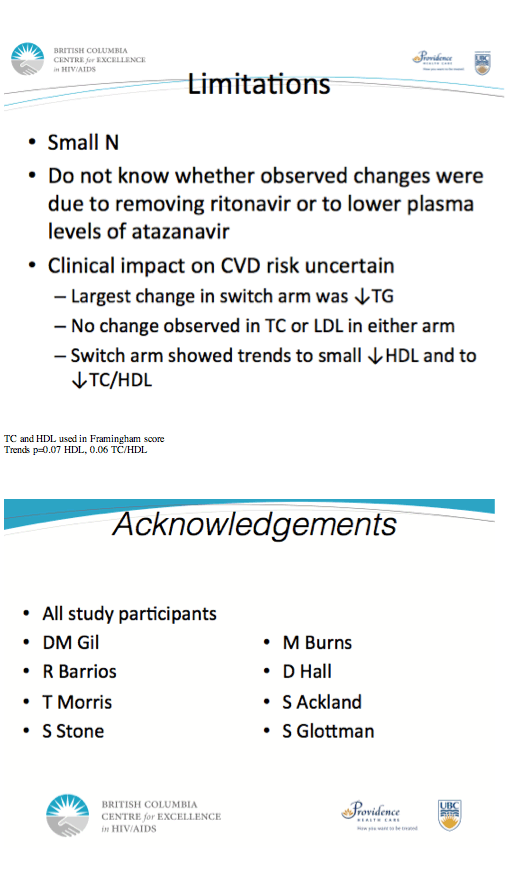
|
| |
|
 |
 |
|
|